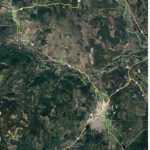Home »

Deer cull funding approved; trans-location funds sought
By Nowell Berg
City of Kimberley Chief Administrative Officer (CAO) Scott Sommerville Nov. 26 made a request for authorization “to apply for a Wildlife Act permit to humanely destroy and dispose of mule deer and their offspring in Canal Flats that were trans-located from Kimberley.”
In Sommerville’s report to city council, he noted there are two collared mule deer does that were trans-located from Kimberley to a wilderness area northeast of Canal Flats. These two deer have migrated back into Canal Flats from the original translocation drop off.
 According to the Urban Deer Management Program (UDMP) contract between the City of Kimberley and FLNRORD (Ministry of Forests, Lands, Natural Resource Operations and Rural Development), the city must apply for a permit to have the two deer destroyed. The UDMP also states the deer cannot be relocated a second time.
According to the Urban Deer Management Program (UDMP) contract between the City of Kimberley and FLNRORD (Ministry of Forests, Lands, Natural Resource Operations and Rural Development), the city must apply for a permit to have the two deer destroyed. The UDMP also states the deer cannot be relocated a second time.
In the discussion that followed, Coun. Darryl Oakley requested the reference to “offspring” be deleted. He explained this request by saying that government biologists spotted tagged fawns of the trans-located does mixing with wild deer. He continued, “fawns are independent now,” adding biologists did not see the need to cull the “offspring” only the collared adults.
Sommerville said the language in the motion was used by the FLNRORD biologists in the UDMP and that changing it would be problematic.
Oakley agreed, withdrawing his request, saying, “Ultimately, FLNRORD will guide what unfolds.”
Adding some context, Mayor McCormick said, “We had to agree to this [cull trans-located deer] or they [FLNRORD] weren’t going to give us a license to do the translocation.”
He felt the city signed the UDMP “under duress.”
The past council was not happy about having to agree with the culling of trans-located deer if they return to an urban area. At this time, FLNRORD is requesting the cull according to the process outlined in the UDMP document.
Coun. Sandra Roberts called the city’s position “unfortunate,” which the Mayor agreed with.
While the city will pay for the cull, FLNRORD will undertake the removal of the two trans-located deer. Other deer will not be part of this process.
The second part of the deer issue relates to trans-locating a new batch of deer from within city boundaries.
Oakley reported the Urban Deer Advisory committee, of which he is part, recommended the urban deer population be reduced to a level of “around 30 animals.”
This would mean the removal of about 100 mule deer.
Coun. Kent Goodwin asked if the proposed $50,000 budget “would be adequate” to remove that many deer.
Oakley said he’d received preliminary pricing from the FLNRO biologist who indicated it would cost “$680 per animal.”
That would peg the total cost at around $68,000 to $70,000.
“This is our first opportunity to make a significant dent in the deer population since we abandoned culling some years ago. I would like to apply for the amount that we need to remove a hundred mule deer and find extra money in our budget this year to make that happen,” Goodwin commented.
His rationale is to avoid larger costs “down the road.” He said the city needs to make a large reduction in the deer population so “the problem becomes much more manageable in the future.” A big effort now is better than “tinkering,” he said.
Mayor McCormick pointed to a 2012 cull of 100 deer that resulted in negligible problems for the next four years. He noted that removing a large number of deer has “a major impact on the issue.”
Five councillors voted to proceed with applying to FLNRORD for operational funding to translocate up to 100 mule deer. Coun. Jason McBain abstained.
The city will release additional details as they become available.
e-KNOW







